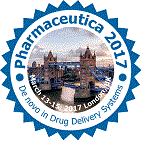
Anselmo J. Otero-Gonzalez
Havana University, Cuba
Title: Cm-p5: an antifungal mollusc-derived peptide conjugated with citric acid-modified manganese-ferrite nanoparticles with enhanced activity against Candida albicans in vitro
Biography
Biography: Anselmo J. Otero-Gonzalez
Abstract
Antimicrobial peptides form part of the first line of defence against pathogens for many organisms. Current treatments for fungal infections are limited by drug toxicity and pathogen resistance. Cm-p5 (SRSELIVHQRLF), a peptide derived from the marine mollusc Cenchritis muricatus (Gastropoda: Littorinidae) has a significantly increased fungistatic activity against pathogenic Candida albicans, exhibiting low toxic effects against a cultured mammalian cell line. Cm-p5 as characterized by Polarimetry of Circular Dichroism and Spectroscopy of Nuclear Magnetic Resonance. The antimicrobial activity of different types of nanoparticles has been previously demonstrated. Specifically, magnetic nanoparticles have been widely studied in biomedicine due to their physicochemical properties. The citric acid-modified manganese ferrite nanoparticles used in this study were characterized by high-resolution transmission electron microscopy, which confirmed the formation of nanocrystals of approximately 5 nm diameter. These nanoparticles were able to inhibit Candida albicans growth in vitro. However, the nanoparticles were not capable of inhibiting Gram-negative bacteria Escherichia coli or Gram-positive bacteria Staphylococcus aureus. The antifungal peptide Cm-p5 was conjugated to the modified manganese ferrite nanoparticles. The antifungal activity of the conjugated nanoparticles was higher than their bulk counterparts. This conjugate proved to be nontoxic to a macrophage cell line at concentrations that showed antimicrobial activity.

